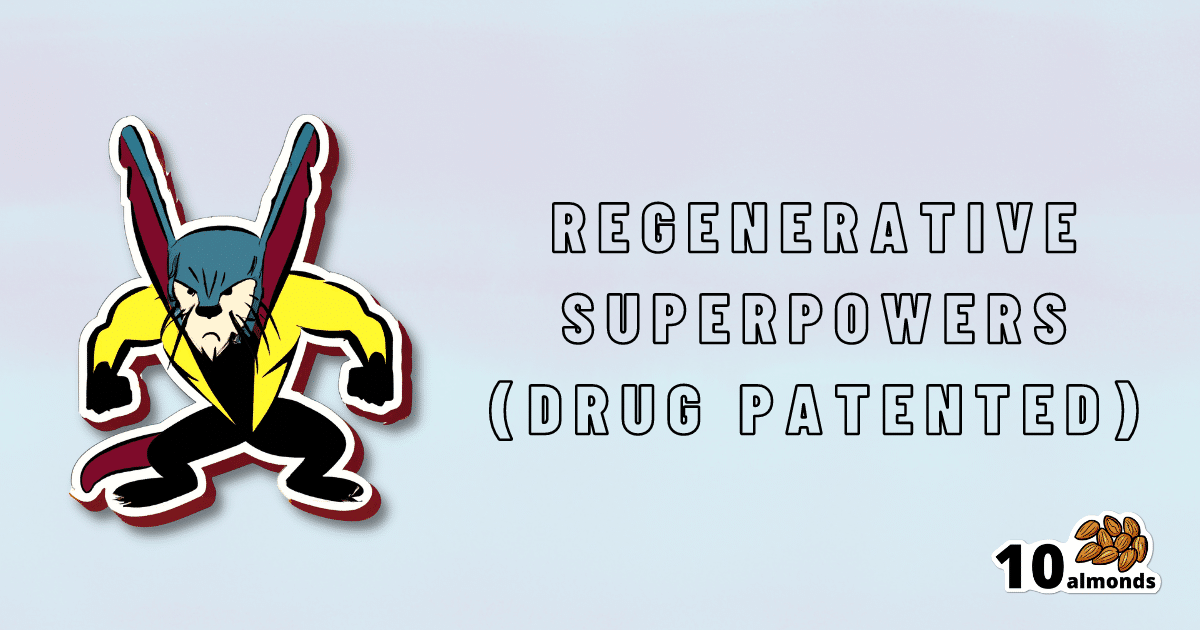Wouldn’t It Be Nice To Have Regenerative Superpowers?
Dr. Ellen Heber-Katz, an internationally-renowned immunologist, accidentally discovered the regenerative powers of mice during an autoimmune study. Her research has led to the development of a drug that promotes regeneration in bones and nerves. Exciting progress towards human applications.

The Best-Laid Schemes of Mice and Medical Researchers…

This is Dr. Ellen Heber-Katz. She’s an internationally-renowned immunologist and regeneration biologist, but her perhaps greatest discovery was accidental.
Unlike in Robert Burns’ famous poem, this one has a happy ending!
But it did involve the best-laid schemes of mice and medical researchers, and how they did indeed “gang gagly“ (or in the English translation, “go awry”).
How it started…
Back in 1995, she was conducting autoimmune research, and doing a mouse study. Her post-doc assistant was assigned to punch holes in the ears of mice that had received an experimental treatment, to distinguish them from the control group.
However, when the mice were later checked, none of them had holes (nor even any indication there ever had been holes punched)—the experiment was ruined, though the post-doc swore she did her job correctly.
So, they had to start from scratch in the new year, but again, a second batch of mice repeated the trick. No holes, no wounds, no scarring, not disruption to their fur, no damage to the cartilage that had been punched through.
In a turn of events worthy of a superhero origin story, they discovered that their laboratory-made autoimmune disease had accidentally given the mice super-healing powers of regeneration.
In the animal kingdom, this is akin to a salamander growing a new tail, but it’s not something usually found in mammals.
Read: A New Murine Model for Mammalian Wound Repair and Regeneration
How it’s going…
Dr. Heber-Katz and colleagues took another 20 years of work to isolate hypoxia-inducible factor-1a (HIF-1a) as a critical molecule that, if blocked, would eliminate the regenerative response.
Further, a drug (which they went on to patent), 1,4-dihydrophenonthrolin-4-one-3-carboxylic acid (1,4-DPCA), chemically induced this regenerative power:
See: Drug-induced regeneration in adult mice
Another 5 years later, they found that this same drug can be used to stimulate the regrowth of bones, too:
And now…
The research is continuing. Here’s the latest, a little over a month ago:
Epithelial–mesenchymal transition: an organizing principle of mammalian regeneration
Regrowing nerves has also been added into the list of things the drug can do.
What about humans?
Superpowered mice are all very well and good, but when can we expect this in humans?
The next step is testing the drug in larger animals, which she hopes to do next year, followed eventually by studies in humans.
Read the latest:
Regrowing nerves and healing without scars? A scientist’s career-long quest comes closer to fruition
Very promising!
Share This Post
Learn To Grow
Sign up for weekly gardening tips, product reviews and discounts.




